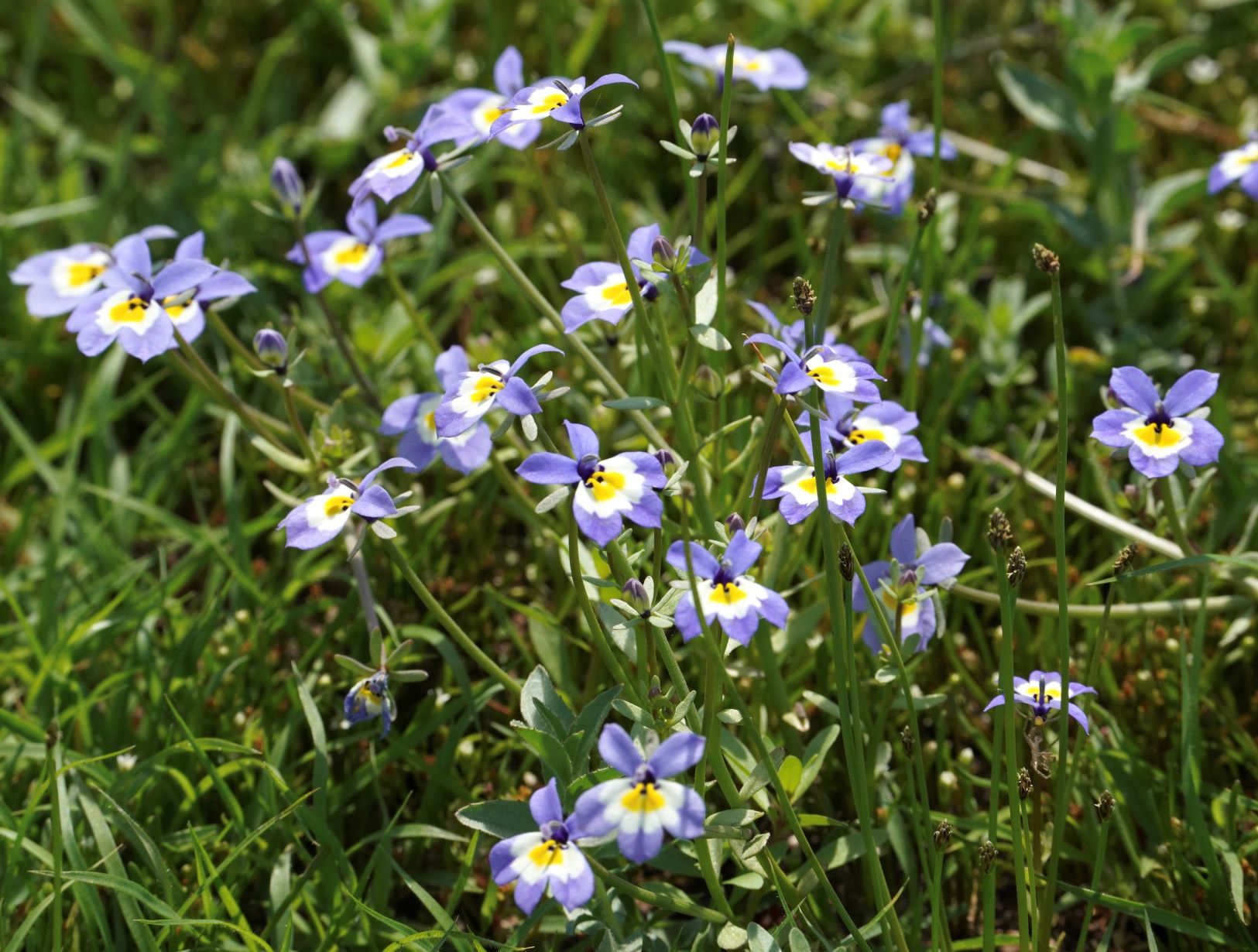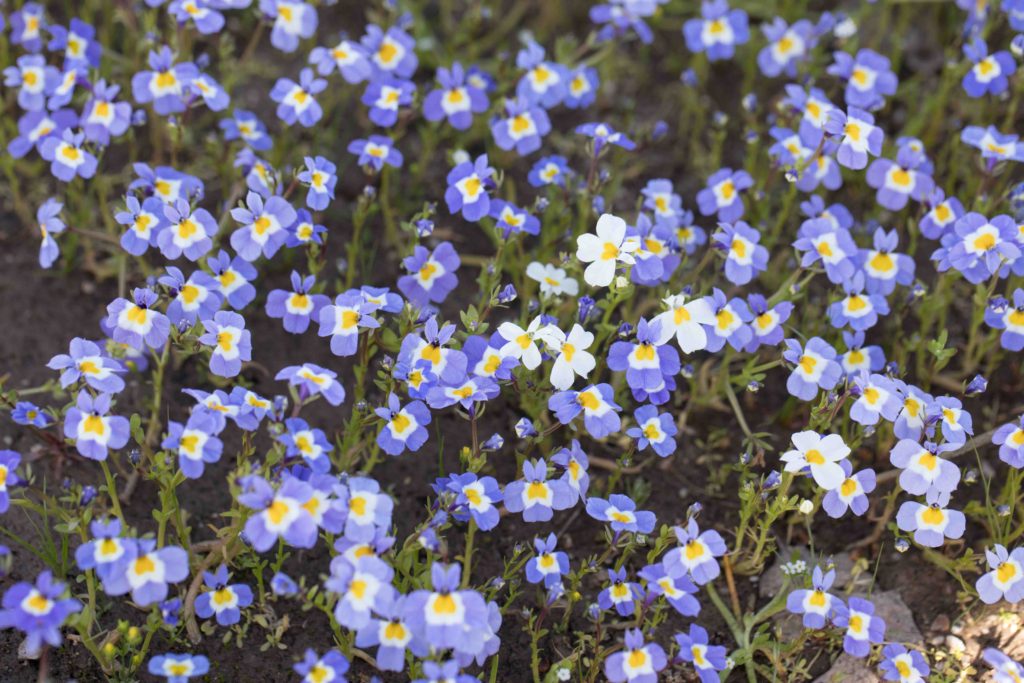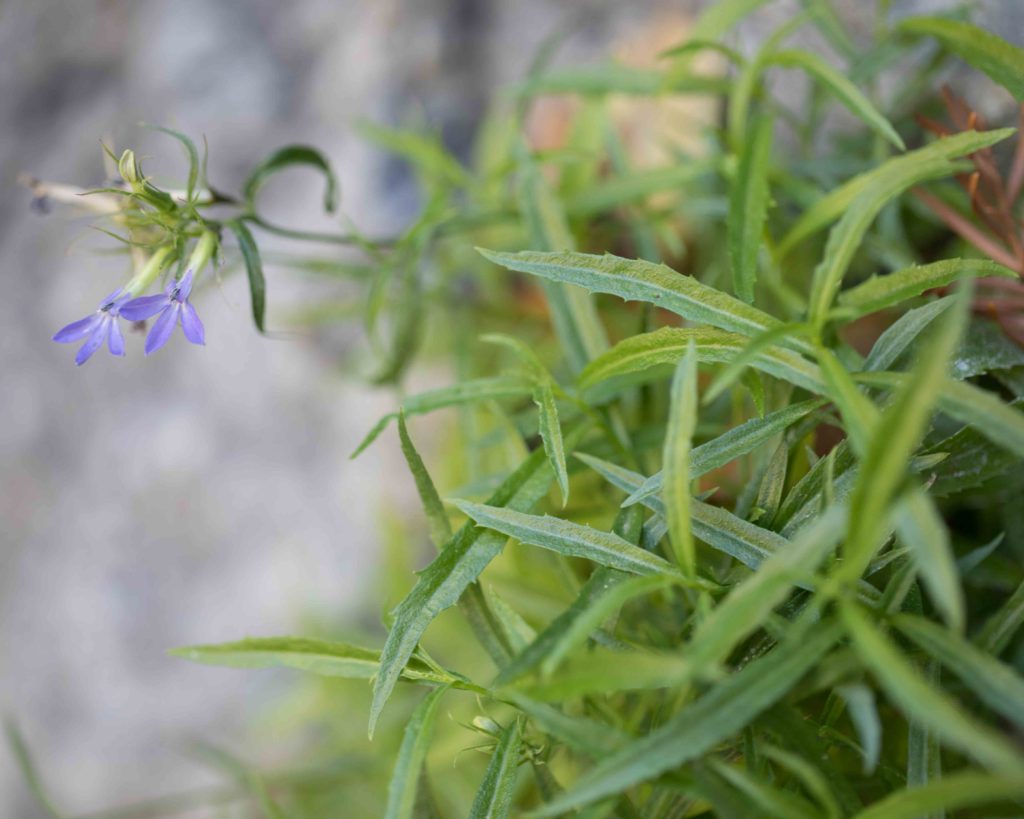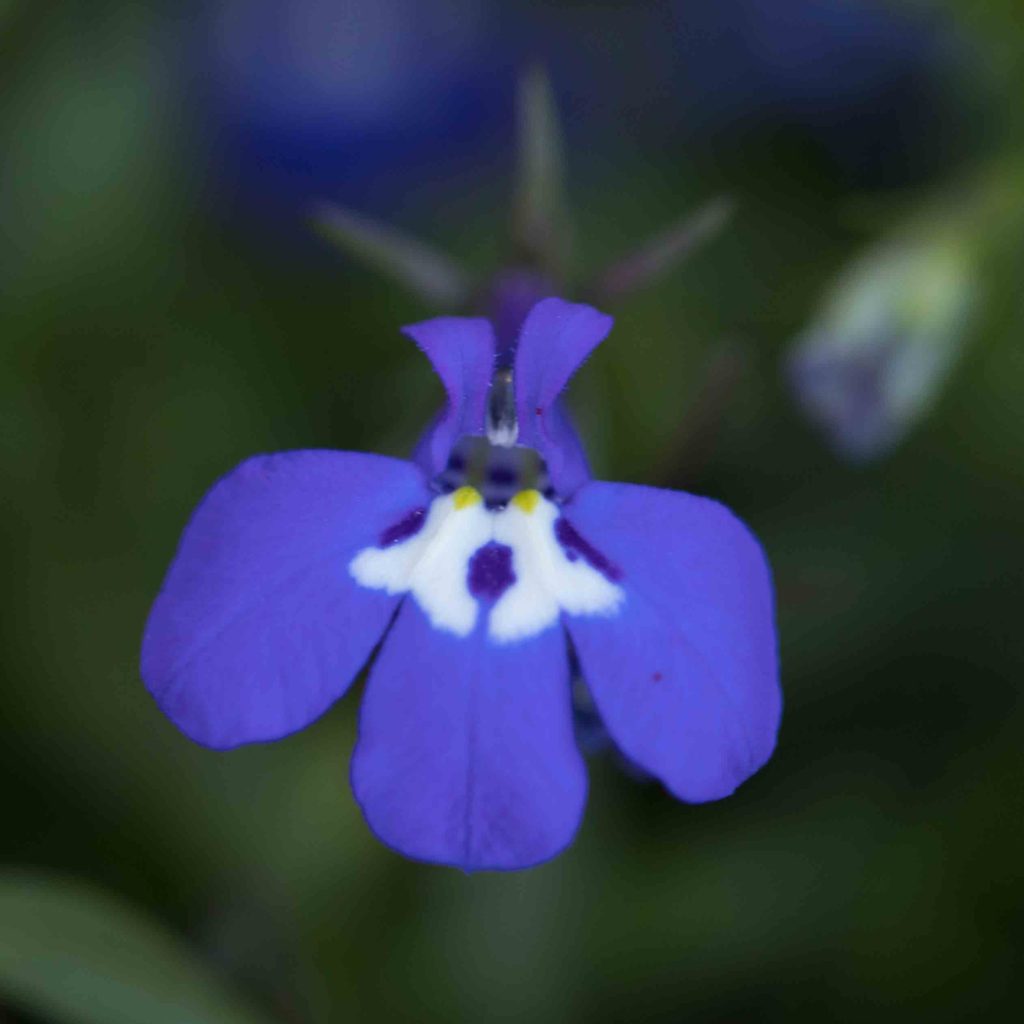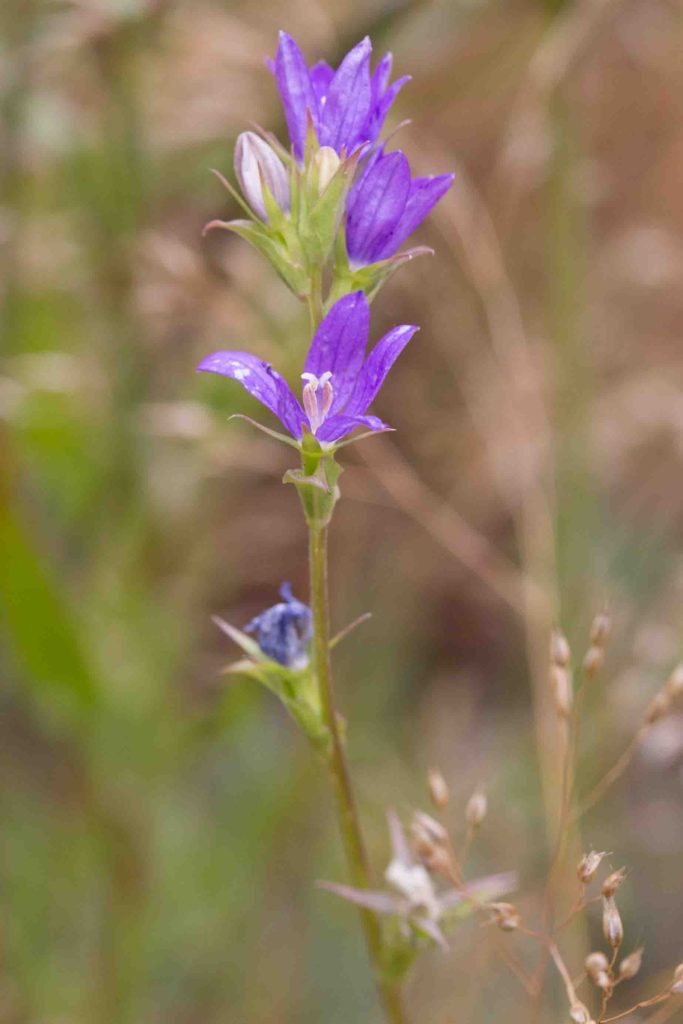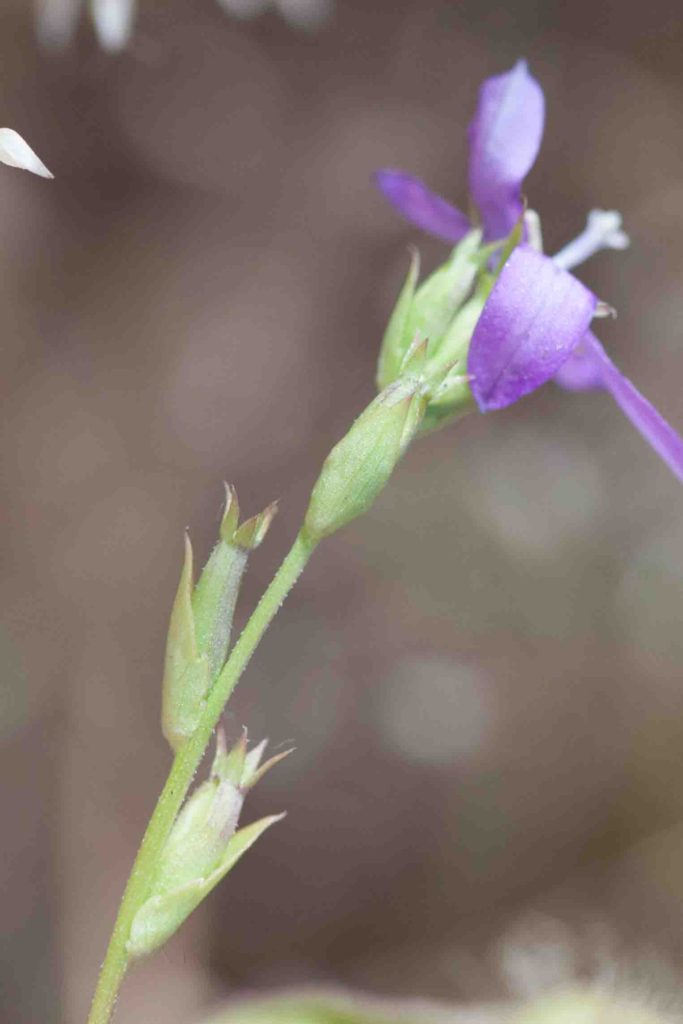Campanulaceae: Bellflower Family
Cuspidate Downingia – Downingia cuspidata
Blooms:
Mar–June
Plant Height:
Prostrate
Flower Size:
Small-medium
Origin:
Native
Habitat:
Vernal pools, meadows
Notes:
Downingias are uncommon in Monterey County. They are found only in the vicinity of the Jolon-Bradley road, where they can be seen in large quantities. This downingia is quite variable. Its flowers are 7-15 mm across, generally bluish-lavender, with a white area in the center which includes 2 ovate yellow spots. Some flowers are pure white, apart from the yellow spots (see photo #3). Downingias are are a close relative of the cultivated lobelia. Lobelias can be distinguished by the presence of a distinct pedicel, while downingia flowers are sessile in the axils of leafy bracts. Photo #2 by CJH.
Rothrock’s / Dunn’s Lobelia – Lobelia dunnii var. serrata
Blooms:
June–Oct
Plant Height:
20–85 cm
Flower Size:
Medium
Origin:
Native
Habitat:
Moist canyons
Notes:
This is the only wild lobelia in Monterey County, and one of only two in California. As in Downingia and the cultivated lobelia, the blue flowers are bilateral. Each has three acute-tipped, ovate lower lobes. There are two smaller, narrow, almost vertical upper lobes, which may curve back. Unlike Downingia, lobelia flowers are clearly pedicelled, with narrow and widely spreading calyx lobes (as in the cultivated lobelia). Its linear-lanceolate leaves have tiny, gland-tipped teeth. This plant is uncommon, found in the Santa Lucia Mountains (including Pfeiffer Big Sur State Park), but nowhere else north of Santa Barbara and Ventura Counties. The right hand photo is the cultivated lobelia, showing the similarities in structure.
Venus’ Looking Glass – Triodanis biflora
Blooms:
Apr–June
Plant Height:
5–40 cm
Flower Size:
Medium
Origin:
Native
Habitat:
Open, disturbed places or burns, many communities, generally near coast
Notes:
An unusual plant which, as its scientific name indicates, produces two kinds of flower. Towards the top of the stem are 5–9 mm, bell-like, pinkish-purple flowers. Lower down the stem, clearly visible in the photo on the right are “cleistogamous” flowers that pollinate themselves without ever opening. The flowers are sessile, subtended by leaf-like bracts.

